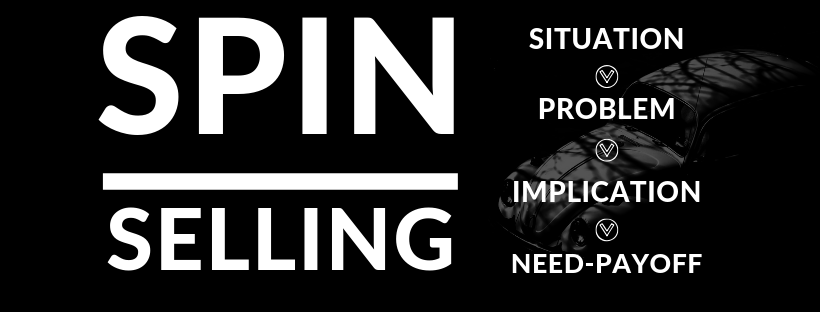How to build a bulletproof pricing strategy for advisory services
Setting a pricing strategy is arguably the most intimidating process for any new advisor. It’s complicated and scary enough that there are pricing consultants to help you price… your consulting services.
Let’s simplify this a bit.
The fact is, everyone has a maximum amount they are willing to pay for a good or service. It’s your job to get as close to that as possible. If you come guns blazing with a random price you’ve picked with no justification for a client’s ROI, the chances your price is accepted, or at the client’s maximum, are slim-to-none. If you arrive at your price based on your average time-spent on the service, you’re running cost-plus pricing. That, as we know by now, is not the goal. Value pricing is the goal.
Mark Wickersham, a brilliant pricing consultant, said it best when he said every buyer wants two things:
Value
Certainty
The way to provide both of these for clients is to tie value to the pricing and certainty to the plan. If a client understands for every dollar they spend with you, they get x dollars in return, and the fee remains unchanged on a monthly basis, not only can they budget for your service, they’re happy to pay it. Couple that with a few scientific findings we’ll get to in a moment, and you have a holistic pricing strategy for your advisory services.
Let’s start with step one, uncovering the value:
Getting a better understanding of the client’s situation to uncover value
Time spent on a project has no intrinsic value to the customer in and of itself. Not to mention, from a client’s perspective, not knowing how big your bill is going to be at the end of a month is a bad feeling.
The only thing the client is interested in is improvement and value you generate.
Clients don’t care about tasks, they care about results.
For this reason, all advisory services must be priced based on value.
We dive into detail onvalue-based pricing here, but here’s the basic premise:
To arrive at the value of a given advisory project you first need to frame the client’s situation, the problem they’re experiencing, the implication of this problem, and how the payoff is measured.
This is a framework called “SPIN” and it has been the foundation of every great salesperson’s technique for decades.
To begin framing value for your clients, ask questions:
Situation: How much revenue do you bring in annually? (you might already know this)
Situation: How did they get to this point?
Situation: What is really motivating the client to solve this? What are their personal goals?
Problem: What do they perceive the issue to be? (A good trick to really drilling down and understanding the fundamental problem is asking variations of “why” four to five times.)
Implication: What might happen if this problem goes unsolved? Personally? Professionally?
Need-Payoff: How will you measure progress toward solving this goal? How do you define success?
Need-Payoff: What will solving this problem mean to the client from a financial perspective?
Need-Payoff: How long can they survive without solving this problem?
Asking these questions will do a few things for you:
Clearly frame the client challenge
Position yourself as the solver of this challenge
Give you an understanding of the monetary value behind solving this challenge
Create urgency in solving this challenge
Align you and your client for long-term success
With this new information you can walk through a plan with your client to create substantial value in their business. The goal would be to divide this value by 10 and set your price somewhere in that ballpark for a 10:1 ROI.
For example, let’s say you calculate solving this challenge will contribute $450,000-$500,000 in added value to the client’s business. If you’re shooting for a 10:1 ROI, this can reasonably be a $45,000 engagement over 3 years where you could bill around $1250 per month.
Walking a client through this pricing logic will build trust and create clarity in your price point.
We’re starting to tie a price range to the value, so let’s dive into creating certainty.
Establishing pricing plans will create certainty
The best advisors incorporate three different pricing tiers. Not because three is a handy number, but because there are three phases of consulting and having three options is scientifically proven to be more effective.
The three phases of consulting
In Peter Block’s book, Flawless Consulting, he discusses three phases for any consulting project:
Contracting phase: This is where you establish scope and general expectations for meeting a goal. This is also where you set project boundaries in order to manage expectations in the future.
Discovery phase: This is where you conduct a thorough analysis of the business, uncovering all necessary data points for understanding the ins and outs of what makes the business tick.
Solutions phase: This is where you develop strategic initiatives for reaching key objectives and schedule feedback sessions to alleviate doubts and plan next steps. You educate all employees on the impact of the solution and how it will make their lives better.
The science of pricing
If you read the Malartu newsletter, you know I don’t pass up a chance to link science and business. So let’s talk about behavioral economics.
It’s scientifically proven that we (humans) have no perception of value
But you just said clients want VALUE AND CERTAINTY?!
Hear me out.
Through the SPIN selling process we have determined there is value in your service. What we don’t know, is the maximum price they will pay for that.
Here’s the truth about relativity according to Dan Ariely, famed behavioral economist and author of one of my favorite books, Predictably Irrational:
At the outset of seeing a pricing plan, we have no real way of determining which is better. The best we can do is compare the cost and benefit related to each tier.
For example, The Economist wanted to offer these subscription options:
1. Internet-only subscription for $59.
2. Print-only subscription for $125.
But they realized that very few people would pay that much for print so they added a twist.
1. Internet-only subscription for $59.
2. Print-only subscription for $125.
3. Print-and-Internet subscription for $125.
By adding this third option for the same price as the second, they changed the basis for comparison. In this new setup, you essentially get the online version for free if you pay for the print, which makes the 3rd option more attractive.
Also, you’ve got two options for the same price, which makes it easy to compare those two and choose the “better” one, and disregard the first option, even if it’s half the price.
That last part is key: By making one plan slightly better than the other, the cheaper plan was relatively ignored.
Here are the results of the experiment:
Results with Two Tiers:
1. Internet-only subscription for $59. – 68%
2. Print-only subscription for $125. – 32%
Results with Three Tiers:
1. Internet-only subscription for $59. – 16%
2. Print-only subscription for $125. – 0%
3. Print-and-Internet subscription for $125. – 84%
In this example we have no idea about the real value of each option is, the best we can do is compare the cost and benefit related to each one.
Take this one step further by anchoring your clients to a higher price
The first price tag associated with a product or service has a decisive role.
So, when launching your advisory plans, take into account your potential buyers perception of your service. Low prices are perceived as cheap, while high prices are perceived as quality.
Going one step further, create a perception that supports your pricing policy. This is how some people can get away with charging ten times the price for the same thing as others.
Or, as Mark Twain once noted about Tom Sawyer, “Tom had discovered a great law of human action, namely, that in order to make a man covet a thing, it is only necessary to make the thing difficult to attain.”
There are two interesting concepts from Predictably Irrational to ponder for your premium pricing plans:
1. Arbitrary coherence.
This refers to a situation in which our judgement is initially influenced by often random anchors, but our following decisions will be coherent and logical relative to those anchors. So if we start bidding low for a service, for whatever reason our following bids are likely to be lower, relative to our first one. We compare our decisions to the first one we made.
2. Self Herding
We’ve all heard about the herd behavior. But as it turns out, you don’t always need a crowd to experience herd behavior.
Take someone who hates Starbucks, but buys a coffee from a local ‘Bucks during a business meeting. Next time she sees Starbucks, she remembers that it wasn’t as bad as she had expected so she gives it another go. By the third time, she’s familiar with the different names and the ambience so she goes in again. Soon our friend is happy to pay $5 for a coffee, although she resented that idea a while ago.
The point is, we look back at our past decisions and experiences and see them much the same way we see a long queue of people in front of a restaurant. If so many people want to get that lunch, it must be good. If I’ve been to this place so many times, it must be good.
This principal promotes your ability to charge a premium price on a recurring basis. Of course, the initial service experience must be good for this to work.
Now that we understand the science of pricing, let’s tie this together.
Naming your plans
Give your tiers three unique names that convey service they provide. For example, you could name your plans:
The Essential Package
The Strategic Package
The Professional Package
The packaging of these service tiers is simple: include what your clients need.
Not sure what your clients need? Ask them.
Our “Open-Ended Survey Question Template” is a great resource for uncovering exactly what your clients need.
Increase the benefits packaged within each plan relative to the complexity of work. We found at Malartu it’s helpful to gauge complexity by the number of data sources you work with in advising your clients.
Arriving at a bullet-proof three tier pricing strategy
Let’s look at an example where we tie these plans with the science of pricing: Let’s say you’ve uncovered your client has a challenge with profitability - their margins are suffering. You’ve deduced that if you can increase the margins of their best-selling products, they stand to gain $200,000 profit this year.
Your Essential Package would include:
Profitability reports that uncover margins per product, average order values, and conversion rates throughout the buying funnel
Your Strategic Package would include:
Implementation of a management framework like the Entrepreneurs Operating System, but no analytics
Your Professional Package would include:
Both the Essential Analytics package and Strategic Package (EOS + Analytics)
Additional data sources to better understand drivers behind financial outcomes, centering the whole team.
And you guessed it, we’re going to give a discount on the Professional Package to bundle the Essential and Strategic package together to arrive at something like this:
The Essential Package: $300/mo
Custom, automated profitability reports that uncover margins per product, average order values, and conversion rates throughout the buying funnel.
The Strategic Package: $900/mo
Implementation of a management framework like the Entrepreneurs Operating System, but no analytics
The Professional Package: $950/mo
Everything in Essential and Strategic Packages
Additional drilldown data sources to better understand drivers behind financial outcomes and empower data-driven teams














Alan Weiss, author of Million Dollar Consulting (which I highly recommend reading), describes a consultant as someone who has a unique set of skills and talents that help to create the value-adding components that their client’s businesses lack.